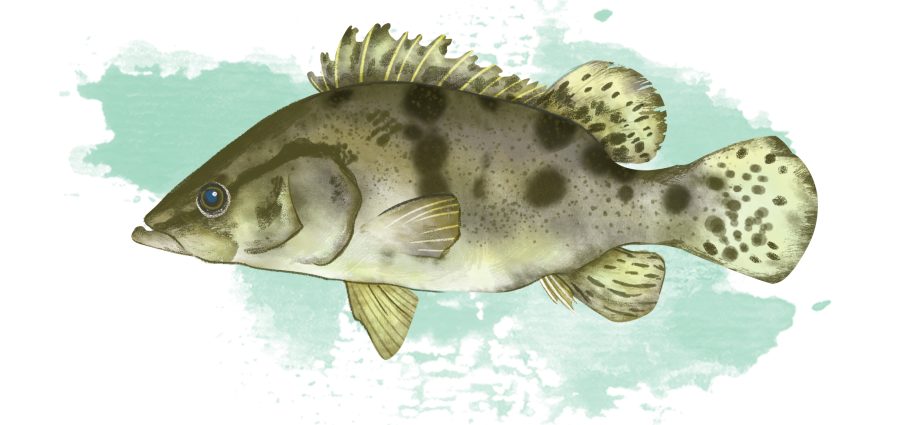Aukha, puddle, Chinese perch is a freshwater fish of the perciformes order. It belongs to the pepper family, which are widely represented in the Pacific region, in the river basins of Chile, Argentina, Australia and East Asia. Chinese perch can grow to a fairly large size of about 8 kg, with a length of about 70 cm. The color of the fish is remarkable and is directly related to the lifestyle: a brown or greenish back, body and fins are covered with spots and specks of various sizes of dark colors. The head is medium in size with a large mouth, the teeth are small, arranged in several rows. There are small scales on the body, a front dorsal fin with sharp rays, in addition, there are spikes on the anal fin. The caudal fin is rounded.
Auha is a predator that prefers ambush hunting. In reservoirs, the fish keeps various water obstacles, snags, thickets of aquatic vegetation. Avoids cold running water, preferring calm areas. During the spring migration period, it often enters rapidly warming floodplain lakes, where it feeds. For wintering, it goes to the deep places of the river, where it is in a sedentary state. Winter activity is very weak. Aukh is considered a very aggressive predator, it is not inferior to pike in gluttony. Leads a benthic lifestyle, mainly feeding on small fish living in the lower layer of water. The victim is grabbed across the body, killing with powerful jaws, and then swallowed. For waters flowing through the territory of Russia, it is a relatively rare species. The Chinese perch is listed in the Red Book in the category of rare, endangered species under threat of extermination. The main spawning grounds on the Amur are located in China, where it is actively caught with net gear.
Fishing methods
Despite some external similarity with the common perch, they are different fish in their behavior. However, the principles of fishing and amateur gear can be almost the same. For fishing, spinning equipment is used, as well as fishing rods for “live bait” and “dead fish”. Fish rarely chase prey, so the most successful fishing is carried out using the “sheer jig” method or natural baits. Medium-sized wobblers, poppers and so on can serve as artificial baits. Catching fish is quite rare also because the behavior of fish is not very mobile, mostly located at the bottom, especially since the main habitat is in river basins with poor transparency for almost the entire season.
Places of fishing and habitat
The Chinese perch-auha lives in the Amur River basin, as well as in other rivers of the PRC and the Korean Peninsula, on Lake Khanka. Sometimes comes across in the rivers of the northwest about. Sakhalin. The main spawning grounds are located in the middle reaches of the Amur, where its population is subject to strong anthropogenic influence in the form of poaching and water pollution. In Russia, most often fish comes across in the waters of the Ussuri River and on Lake Khanka.
Spawning
Fish spawning takes place in the spring and summer, when the water warms up to temperatures above 200C. The fish become sexually mature when they reach a size of 30-40 cm. The fry quickly switch to predatory food. Despite the large number of spawned eggs, the population is practically not restored. This is also due to natural factors occurring due to the death of fry in the absence of a good food base. The main food for juveniles of aukha are fish larvae of other species. Mismatch of spawning cycles with other fish leads to the mass death of juvenile Chinese perch.










